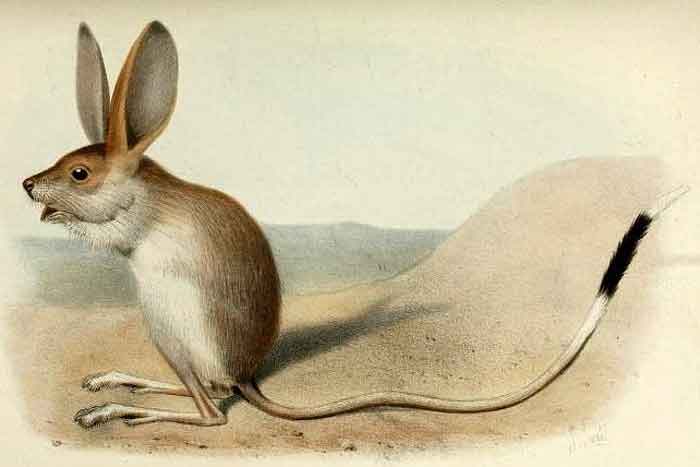
Superregnum: Eukaryota
Cladus: Unikonta
Cladus: Opisthokonta
Cladus: Holozoa
Regnum: Animalia
Subregnum: Eumetazoa
Cladus: Bilateria
Cladus: Nephrozoa
Superphylum: Deuterostomia
Phylum: Chordata
Subphylum: Vertebrata
Infraphylum: Gnathostomata
Megaclassis: Osteichthyes
Cladus: Sarcopterygii
Cladus: Rhipidistia
Cladus: Tetrapodomorpha
Cladus: Eotetrapodiformes
Cladus: Elpistostegalia
Superclassis: Tetrapoda
Cladus: Reptiliomorpha
Cladus: Amniota
Cladus: Synapsida
Cladus: Eupelycosauria
Cladus: Sphenacodontia
Cladus: Sphenacodontoidea
Cladus: Therapsida
Cladus: Theriodontia
Cladus: Cynodontia
Cladus: Eucynodontia
Cladus: Probainognathia
Cladus: Prozostrodontia
Cladus: Mammaliaformes
Classis: Mammalia
Subclassis: Trechnotheria
Infraclassis: Zatheria
Supercohors: Theria
Cohors: Eutheria
Infraclassis: Placentalia
Cladus: Boreoeutheria
Superordo: Euarchontoglires
Ordo: Rodentiaa
Subordo: Myomorpha
Superfamilia: Dipodoidea
Familia: Dipodidae
Subfamilia: Euchoreutinae
Genus: Euchoreutes
Species: Euchoreutes naso
Name
Euchoreutes naso Sclater, 1891
Type locality: Northwestern China (Western Xinjiang)
References
Euchoreutes naso in Mammal Species of the World.
Wilson, Don E. & Reeder, DeeAnn M. (Editors) 2005. Mammal Species of the World – A Taxonomic and Geographic Reference. Third edition. ISBN 0-8018-8221-4.
IUCN: Euchoreutes naso Sclater, 1891 (Least Concern)
Vernacular names
English: Long-eared Jerboa
español: Jerbo de orejas largas
polski: Skoczek długouchy
The long-eared jerboa (Euchoreutes naso)[2] is a nocturnal mouse-like rodent with a long tail, long hind legs for jumping, and exceptionally large ears. It is distinct enough that authorities consider it to be the only member of both its genus, Euchoreutes, and subfamily, Euchoreutinae.
Long-eared jerboas are found in the Palearctic ecozone. The specific palearctic ecozone areas they are found in are southernmost Mongolia to the Takla-Makan Desert, Mengxin, Aerijin Mountain, and Qing-Zang Plateau regions of north western China.[3] Long-eared jerboas in most cases are nocturnal,[3] The long-eared jerboa's fur according to the book 100 animals to see before they die "is reddish yellow to pale russet with white underparts."[4] Very little is known about the species.
Description
The long-eared jerboa's head and body length measures 70 mm (2.8 in) to 90 mm (3.5 in) while its tail is double this size, between 150 mm (5.9 in) and 162 mm (6.4 in).[3] Like its disproportionately long tail, its hind feet are also large, helping it to jump high, measuring between 40 mm (1.6 in) and 46 mm (1.8 in).[3] It weighs 24 g (0.85 oz) to 38 g (1.3 oz).[4] Long-eared jerboas usually eat insects.[3] They use sound to locate and capture them by performing fast leaps into the air.[3] According to animal diversity web "The two lateral digits are shorter than the three central ones. The central metatarsals are fused for a small distance. The feet are covered with tufts of bristly hairs. Long-eared jerboas have ears that are 1/3 longer than their heads. The incisors are thin and white. A small premolar can be found on each side of the upper jaw. Females have eight mammae."[3] Their fur is light reddish/brown with a white underside. Their tails are covered in fine hairs the same color as their body and have a black and white tuft on the end.
Conservation
The long-eared jerboa was identified as one of the top-10 "focal species" in 2007 by the Evolutionarily Distinct and Globally Endangered (EDGE) project.[5]
In 2007 Zoological Society of London EDGE of Existence Programme sent a researcher to study human impact on its environment. The study returned with video footage that has been noted as the "first time" the creature has been "recorded on camera".[6] This has helped to start a campaign to protect them.[7]
References
Batsaikhan, N.; Avirmed, D.; Tinnin, D. & Smith, A.T. (2008). "Euchoreutes naso". IUCN Red List of Threatened Species. 2008. Retrieved 17 March 2009. Database entry includes a brief justification of why this species is of least concern
Holden, M.E.; Musser, G.G. (2005). "Family Dipodidae". In Wilson, D.E.; Reeder, D.M. (eds.). Mammal Species of the World: A Taxonomic and Geographic Reference (3rd ed.). Johns Hopkins University Press. p. 886. ISBN 978-0-8018-8221-0. OCLC 62265494.
Swanson, N.; Yahnke, C. (2007). "Euchoreutes naso". Animal Diversity Web. Retrieved 4 January 2012.
Nick Garbutt; Mike Unwin (1 December 2007). 100 Animals to See Before They Die. Bradt Travel Guides. pp. 29–. ISBN 978-1-84162-236-1. Retrieved 4 January 2012.
"Protection for 'weirdest' species". BBC. 16 January 2007. Retrieved 22 May 2007.
Baillie, J. (10 December 2007). "First known footage of wild long-eared jerboas". Retrieved 31 March 2009.
Morelle, Rebecca (10 December 2007). "Mysterious mammal caught on film". BBC News. Retrieved 31 March 2009.
9. www.theanimalfiles.com
Retrieved from "http://en.wikipedia.org/"
All text is available under the terms of the GNU Free Documentation License

